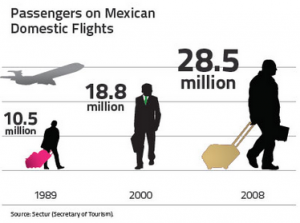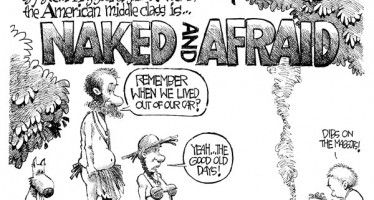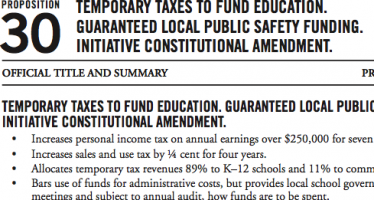Middle class rises in Mexico — declines in U.S.

As I have noted, in the United States, there has been no “economic recovery,” and the American middle class is shrinking.
But Mexico is booming, with a growing middle class. The latest from ABC News/Univision:
“A new study on Mexico helps to explain the recent fall in Mexican immigration to the U.S. It suggests that Mexico is slowly becoming a “middle class country.
“The study by Mexico’s National Statistics and Geography Institute [INEGI] says that 42 percent of Mexican homes qualify as “middle class” while 39 percent of the country’s overall population falls into this social category.
Look at this stunning graphic, which shows Mexican domestic air travel tripling in less than 25 years:
U.S. recession
It’s also remarkable that this has happened even though the U.S. economy — obviously Mexico’s major destination for exports, as well as for remittances Mexican workers in the U.S. send back South — has been struggling to get out of the Great Recession. If our economy were stronger, Mexico’s would be growing even faster.
The article doesn’t discuss why the Mexican growth is occurring. But the reason is clear: In 1994, Mexico took really bad advice from the Clinton administration and devaluated the peso by half. This caused what’s called the “Mexican peso crisis” or “Tequila crisis,” sending hundreds of thousands of Mexicans to El Norte looking for work. But after that, pro-market policies were adopted by new Presidente Ernesto Zedillo, even though he was a member of the stodgy old PRI. He cut taxes and regulations and the economy boomed.
After 70 years in absolute power, the PRI also finally allowed opposition parties to rise. In 2000, PAN candidate Vicente Fox won and continued the market reforms. He was succeeded the PAN candidate Felipe Calderon in 2006, who also advanced markets.
Presidente Pena
Last year, Enrique Pena Nieto brought the PRI back to power. But he has pledged even more market reforms, including trying to privatize the inefficient Pemex state oil monopoly, which would bring to Mexico the vast oil boom the rest of North America is enjoying; and Carlos Slim’s telecommunications monopoly, which keeps prices high, retarding the growth of the Internet economy.
Contrast with U.S.
Let’s contrast Mexico’s great progress with regression in the United States. After his 1993 tax increase and his bad advice on Mexico’s devaluation in 1994, President Bill Clinton actually switched to pro-market policies after he lost control of both houses of Congress in November 1994. You might remember him insisting, “The era of big government is over.” He then worked with the Republicans to cut taxes three times, reformed welfare and supported Fed Chairman Alan Greenspan’s non-inflationary policies. He even balanced the budget his last two years in office.
Disaster came with the election of Republican President George W. Bush in 2001. He went on a wild spending spree, boosting domestic spending faster than any president since LBJ in the 1960s. Bush allowed Greenspan to reverse course and debase the dollar, with the currency declining against gold from $255 then to $1,400 today. That’s why the gas you fill up your car with rose from 99 cents a gallon to $4 today.
After the Enron and other financial scandals, Bush again in 2002 signed the anti-business Sarbanes-Oxley hyper-regulations. Co-author Rep. Michael G. Oxley, R-Ohio, soon condemned it as regulatory overkill, but the damage was done.
Bush’s tax cuts were temporary, meaning people couldn’t plan; and mostly were repealed by the Fiscal Cliff deal on Jan 1, 2013 between President Obama and Republican House Speaker John Boehner.
Bush also promoted no-interest housing and Greenspan’s ultra-low interest rates, which goosed the housing bubble of the mid-2000s.
Then, when the bubble burst in 2007 and the Great Recession hit, followed by the Sept. 2008 financial crisis, Bush panicked again and signed the TARP $700 billion bailout of Wall Street by Main Street.
Obama doldrums
Under Obama, taxes have been raised and Obamacare is ripping up the economy like a metastasizing cancer. The phony “recovery” continues only because current Fed Chairman Ben Bernanke pumped trillions of dollars of created Funny Money into the system; and has kept interest rates near zero percent to goose the stock and housing markets. That means the middle class suffers 2 percent (or more) inflation, but gets nothing from its passbook savings accounts.
In the past, even during recessions, interest rates always were kept about 2 percentage points above inflation; which would mean interest rates now should be 4 percent, instead of the actual 2 percent.
So the middle class, instead of seeing its savings rise 2 percent, sees them effectively dropping by 2 percent from inflation. Savings gap: negative 4 percent. That’s why the U.S. middle class, despite the bogus “recovery,” is declining fast.
But the middle class is rising in Mexico. When I leave California, I’ll be headed to prosperity “South of the Border” — down Mexico Way.
Related Articles
Legislating Fur
It’s difficult not to chuckle at Assemblywoman Fiona Ma’s, D-San Francisco, proposed bill requiring all garments sold in California made
State of the Union won’t help shrinking CA middle class
California is a place where middle-class jobs are vanishing faster than a politician’s word of honor. But it’s not surprising
Want to extend Prop. 30 tax increases?
You probably saw this one coming. Just two years ago Gov. Jerry Brown and his union allies hoodwinked voters into






